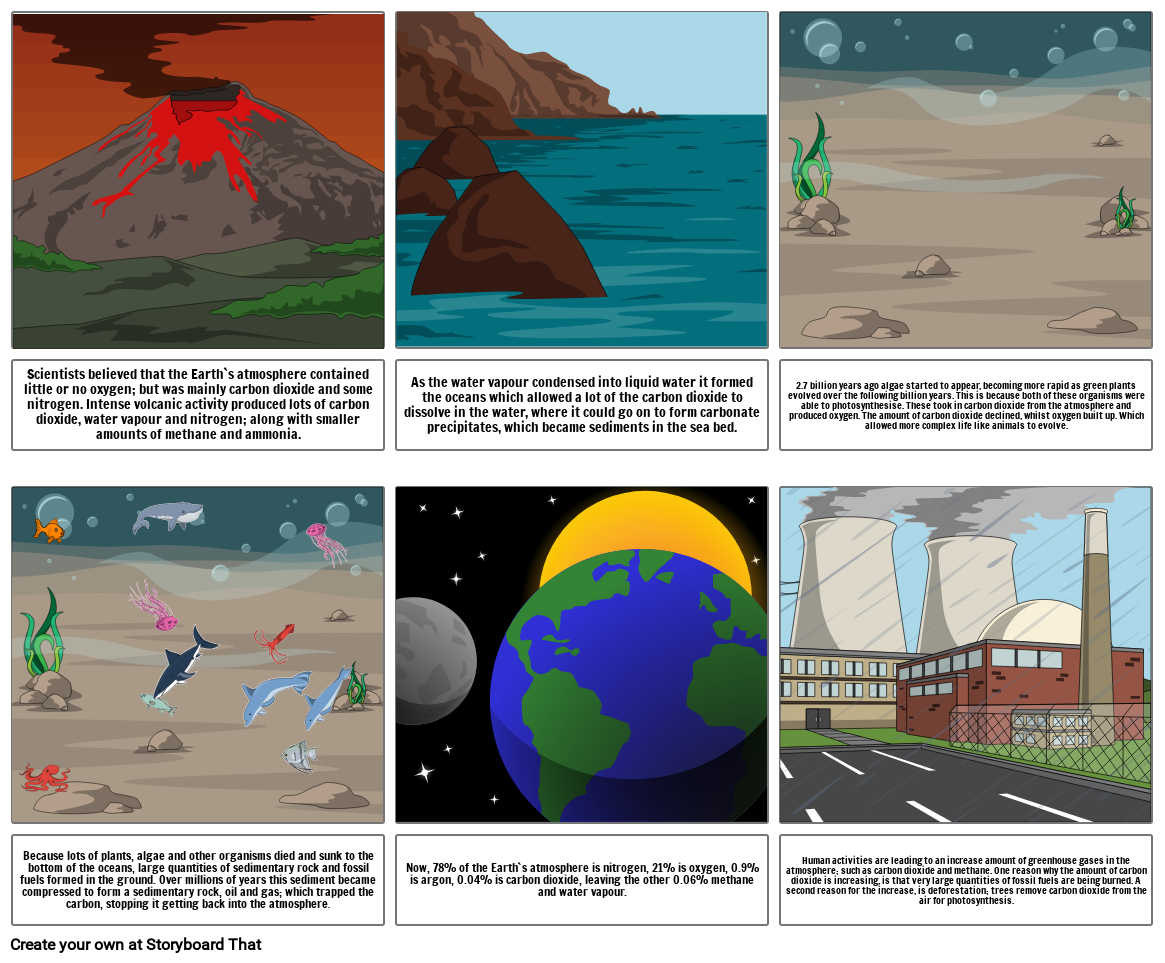Evolution of the atmosphere

Text z Príbehu
- Scientists believed that the Earth`s atmosphere contained little or no oxygen; but was mainly carbon dioxide and some nitrogen. Intense volcanic activity produced lots of carbon dioxide, water vapour and nitrogen; along with smaller amounts of methane and ammonia.
- As the water vapour condensed into liquid water it formed the oceans which allowed a lot of the carbon dioxide to dissolve in the water, where it could go on to form carbonate precipitates, which became sediments in the sea bed.
- 2.7 billion years ago algae started to appear, becoming more rapid as green plants evolved over the following billion years. This is because both of these organisms were able to photosynthesise. These took in carbon dioxide from the atmosphere and produced oxygen. The amount of carbon dioxide declined, whilst oxygen built up. Which allowed more complex life like animals to evolve.
- Because lots of plants, algae and other organisms died and sunk to the bottom of the oceans, large quantities of sedimentary rock and fossil fuels formed in the ground. Over millions of years this sediment became compressed to form a sedimentary rock, oil and gas; which trapped the carbon, stopping it getting back into the atmosphere.
- Now, 78% of the Earth`s atmosphere is nitrogen, 21% is oxygen, 0.9% is argon, 0.04% is carbon dioxide, leaving the other 0.06% methane and water vapour.
- Human activities are leading to an increase amount of greenhouse gases in the atmosphere; such as carbon dioxide and methane. One reason why the amount of carbon dioxide is increasing, is that very large quantities of fossil fuels are being burned. A second reason for the increase, is deforestation; trees remove carbon dioxide from the air for photosynthesis.
Bolo vytvorených viac ako 30 miliónov storyboardov

